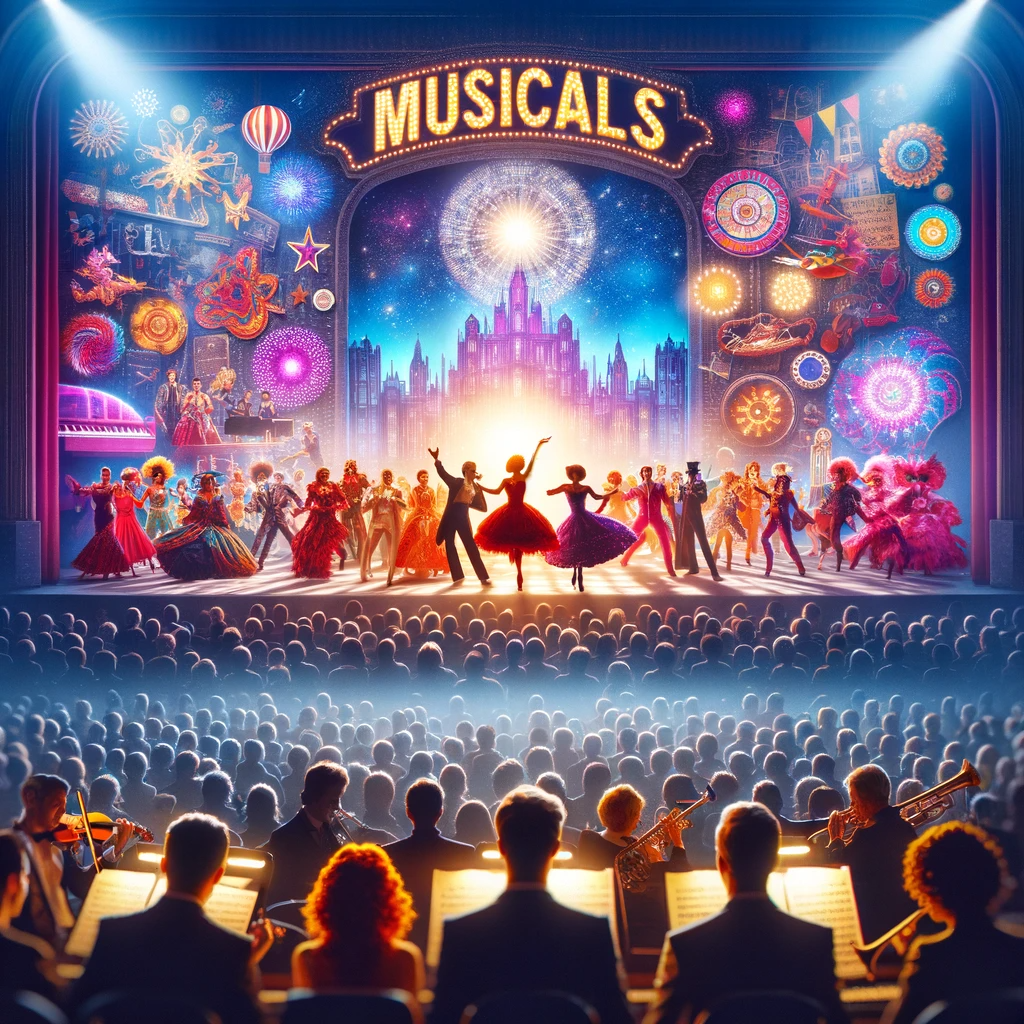The theater world is a kaleidoscope of genres and styles, but among them, musicals hold a special place. With their unique blend of music, storytelling, and dance, musicals have a way of captivating the hearts of audiences like no other form of entertainment. “Musicals & More” celebrates this enchanting world, where narratives are sung, emotions are choreographed, and every performance is a rhapsody of the stage.
The Magic of Musicals At the core of a musical is its ability to express what words alone cannot. It’s where dialogue breaks into song, allowing characters to express their innermost feelings in a universal language. “Musicals bring a story to life in full color, with every note and step,” says composer and lyricist Ethan Green. “They’re about connecting with the audience on a profound, emotional level.”
The Evolution of the Genre Musicals have evolved from the vaudeville and operetta traditions to become a rich and varied genre. From the classic sounds of Rodgers and Hammerstein to the rock operas of Andrew Lloyd Webber and the hip-hop-infused history of Lin-Manuel Miranda’s “Hamilton,” musicals are constantly reinventing themselves. Each era brings a fresh sound, a new approach to storytelling, and a different way to capture the zeitgeist.
Behind the Scenes of a Musical Creating a musical is a monumental undertaking. It’s a symphony of collaboration among writers, composers, directors, choreographers, and designers. “It’s about harmony, not just in the music but in the creative process,” notes director Sofia Alvarez. “The alignment of vision is crucial to bring a musical from script to stage.”
The Dance of Choreography Choreography in musicals is storytelling through movement. It can narrate a character’s journey, represent a community, or simply celebrate the human spirit. Choreographer Jamal Sims says, “When we dance, we’re telling a part of the story that transcends language. It’s the pulse of the musical.”
The Spectacle of Set and Costume Design The visual elements of a musical are as vital as the songs. Set and costume design create the world that the characters inhabit. Set designer Mia Chen shares, “Our designs are the visual rhythm to the music’s melody. We build the world that the audience will escape to.”
Orchestration: The Heartbeat of a Musical The orchestrators are the unsung heroes of musicals. They take a composer’s music and fill it with texture and color, creating the sonic landscape that supports the narrative. “We work in the background,” says orchestrator Leo Park, “but the music’s heartbeat is in our hands.”
The Power of Performance Musicals are nothing without their performers, who must often be triple threats—equally skilled in acting, singing, and dancing. Performer Chloe Kim explains, “You live the character, you breathe their emotions, and you express their story through every medium available to you.”
Musicals as a Reflection of Society While musicals entertain, they also reflect and sometimes challenge societal norms. They can be powerful vehicles for commentary and change, touching on themes of love, injustice, identity, and resilience. “Musicals have the power to open eyes and hearts,” says playwright Jordan Lee. “They can be transformative experiences.”
Musicals & More is not just about the performances but the experiences they offer. It’s where the mundane becomes miraculous, where stories are not just told but felt, and where the audience leaves with melodies in their hearts and the echo of a story that lingers long after the final bow.
This article delves into the enchanting world of musical theater, highlighting the multi-faceted approach to storytelling that musicals offer, and the powerful impact they have on audiences and society at large.


